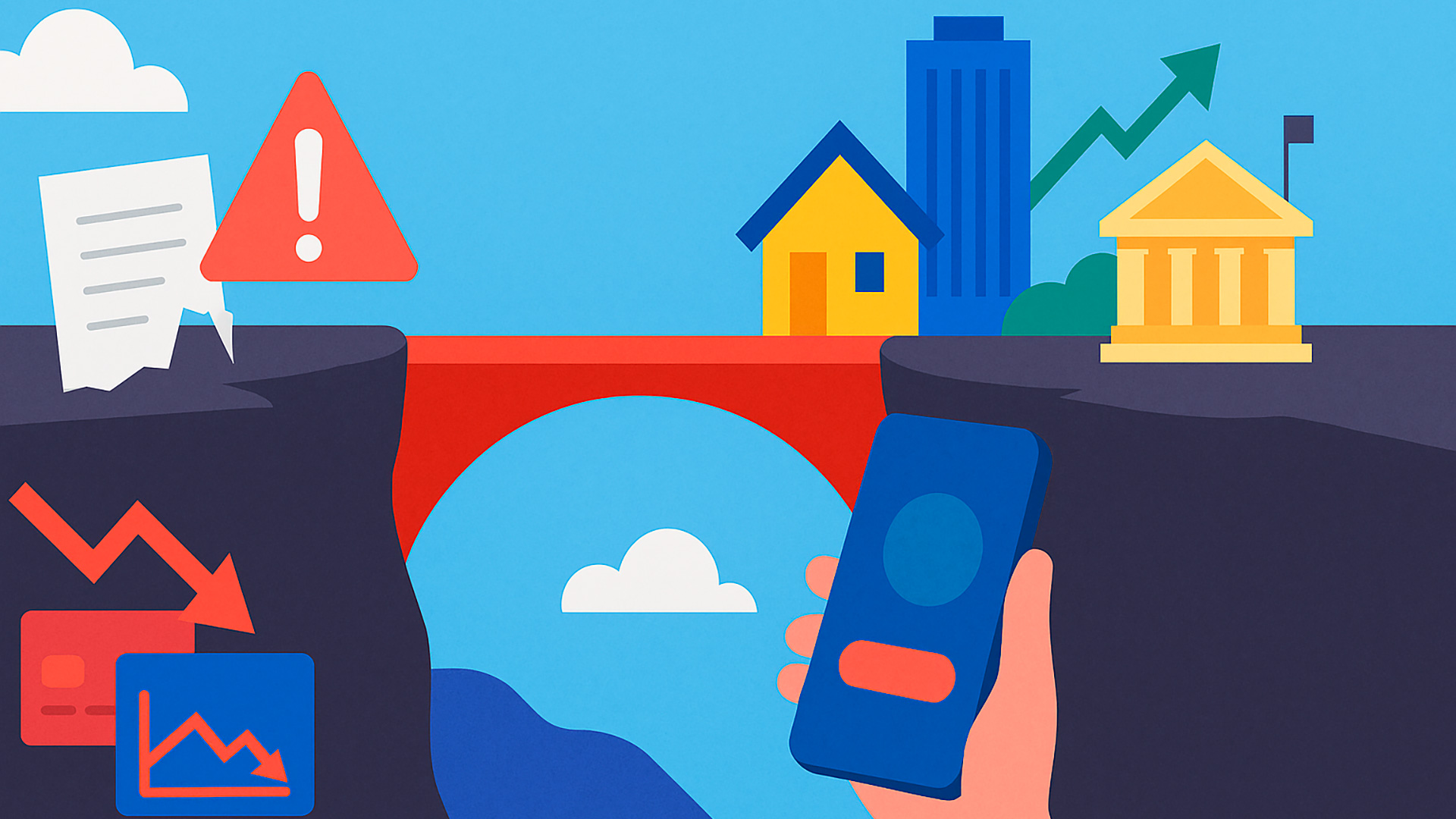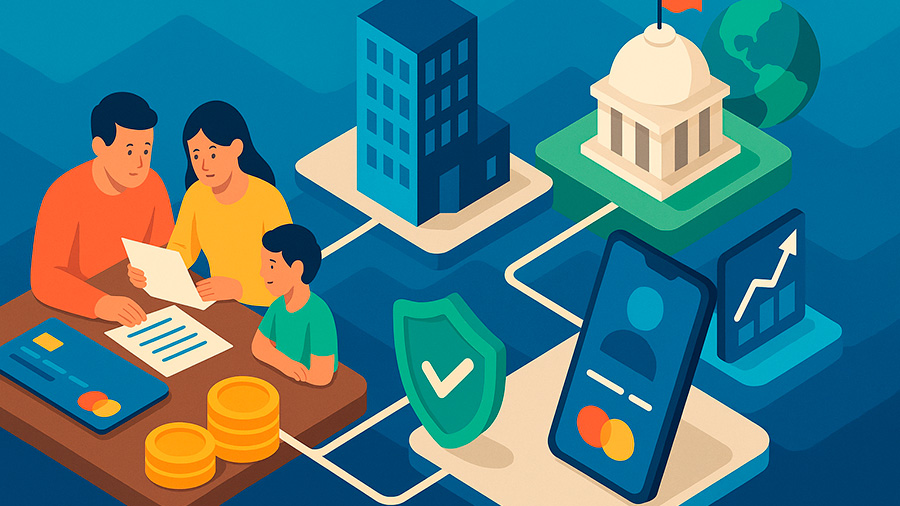The Power of Borrowed Money in Rebuilding Lives and Economies

Credit is one of the most powerful forces in the global economy. It shapes how families manage their daily expenses, how companies expand, and even how entire nations survive economic downturns. When used responsibly, it becomes more than borrowed money—it becomes a bridge to stability, growth, and opportunity. The idea of credit help is not limited to individual households. It extends to corporations facing crises and governments navigating national emergencies. By examining how credit operates on every level of society, we can better understand why it is such a vital tool and how it can provide pathways back to stability.
Why Credit Exists in the First Place
At its core, credit allows people and institutions to access resources before they have the money to pay for them. For individuals, this might mean taking out a mortgage to buy a home or using a loan to cover emergency expenses. For companies, it can involve borrowing to fund research, expand operations, or weather financial challenges. For countries, it often means securing loans from international organizations like the IMF or World Bank to keep essential services running during crises. In each case, credit help functions as a survival tool and a catalyst for growth.
Credit Help for Households
On the personal level, borrowing money can make the difference between financial collapse and recovery. Consider a family facing medical bills after an unexpected emergency. Without access to credit, the family might fall behind on rent, utilities, or even food. A personal loan or credit card allows them to cover these costs while spreading repayment over time. Similarly, homeowners use mortgages not just to buy property but to build wealth through equity. Responsible credit use helps families stabilize, invest in education, and secure better futures for their children.
Rules Individuals Should Follow
- Borrow only when there is a clear repayment plan.
- Use loans for productive purposes, not impulse spending.
- Always pay more than the minimum to reduce interest costs.
- Maintain good communication with lenders to explore relief programs if financial trouble arises.
These simple rules transform redit help from a burden into a tool that empowers individuals to move forward after setbacks.
Corporate Survival Through Credit
Large corporations often rely on credit during times of crisis. Even global brands have faced bankruptcy but returned to strength with strategic borrowing. For example, General Motors filed for bankruptcy in 2009 during the financial crisis. With government-backed loans and credit support, the company restructured, shed unprofitable divisions, and eventually became profitable again. Marvel Entertainment is another story—after declaring bankruptcy in the 1990s, it secured loans and partnerships that fueled its eventual rise into one of the most powerful entertainment companies in the world. These stories illustrate how credit help allows businesses to transform failure into opportunity.
Table: Companies Rescued by Credit
| Company | Year of Crisis | Form of Credit Help | Outcome |
|---|---|---|---|
| General Motors | 2009 | Government loans and restructuring support | Revived operations, returned to profitability |
| Marvel Entertainment | 1996 | Loans and strategic financing | Became a global entertainment powerhouse |
| Delta Airlines | 2005 | Bankruptcy restructuring with credit access | Re-emerged as one of the largest airlines worldwide |
National Economies and Credit Support
On a larger scale, entire countries rely on borrowing to manage economic challenges. During the COVID-19 pandemic, nations around the globe turned to credit markets and international institutions for emergency financing. For example, the United States issued trillions in government bonds to fund stimulus programs, unemployment benefits, and small-business relief. Developing countries often use loans from the International Monetary Fund (IMF) or World Bank to stabilize currencies, pay for healthcare, and maintain essential infrastructure during crises. In this way, credit help ensures not only survival but also recovery for millions of people at once.

Examples of National Credit Help
- Greece: During its debt crisis in the 2010s, Greece received credit packages from the European Union and IMF, preventing total economic collapse.
- Argentina: Multiple IMF loans have helped stabilize the country’s economy, though challenges remain in repayment.
- United States: During recessions, issuing government bonds provides liquidity for stimulus efforts.
These examples show that credit is not just about numbers—it is about preserving livelihoods, preventing unrest, and giving countries the breathing room they need to recover.
How Credit Help Differs at Each Level
Though the concept is the same—borrowing now and repaying later—how credit operates varies significantly between individuals, companies, and nations.
| Borrower | Type of Credit | Purpose | Impact |
|---|---|---|---|
| Individuals | Personal loans, credit cards, mortgages | Cover expenses, invest in assets | Stability, improved living standards |
| Corporations | Business loans, government-backed credit | Restructure, expand operations | Preserve jobs, stimulate innovation |
| Nations | Bonds, IMF/World Bank loans | Stimulus, economic stabilization | Prevent collapse, ensure public services |
Challenges and Risks of Credit
While credit can help, it also carries risks. Misusing loans can trap households in cycles of debt. Corporations that borrow without restructuring may fail despite financial assistance. Countries that over-rely on foreign credit may face long-term instability and loss of economic independence. For credit help to succeed, it must be paired with strong planning, transparency, and a commitment to change. Borrowing only buys time—it is how that time is used that determines success.
Practical Tips for Individuals Seeking Credit Help
For everyday consumers, the path to using credit wisely involves discipline and awareness. Here are simple steps:
- Check your credit reports regularly to spot errors.
- Consolidate high-interest debts into lower-rate loans where possible.
- Communicate with creditors early if payment difficulties arise.
- Explore credit counseling or financial education resources for long-term planning.
The Bigger Picture: Why Credit Matters
From households to entire nations, credit has the same ultimate purpose: to provide time and flexibility. Whether it’s a family covering medical bills, a corporation restructuring after bankruptcy, or a government stabilizing during a pandemic, credit help ensures that crises don’t permanently derail progress. It creates space for new ideas, renewed stability, and long-term growth.
Credit as a Lifeline
Credit is often misunderstood as a burden, but when used correctly, it is one of the strongest tools for resilience. For individuals, it means getting through hardships and investing in a better future. For companies, it allows recovery from bankruptcy and transformation into stronger businesses. For countries, it preserves stability and prevents collapse during crises. Across all these levels, credit help is not just about borrowing—it is about rebuilding, adapting, and moving forward. When paired with responsibility and clear goals, credit becomes less of a debt and more of a lifeline, sustaining people, businesses, and nations alike.

